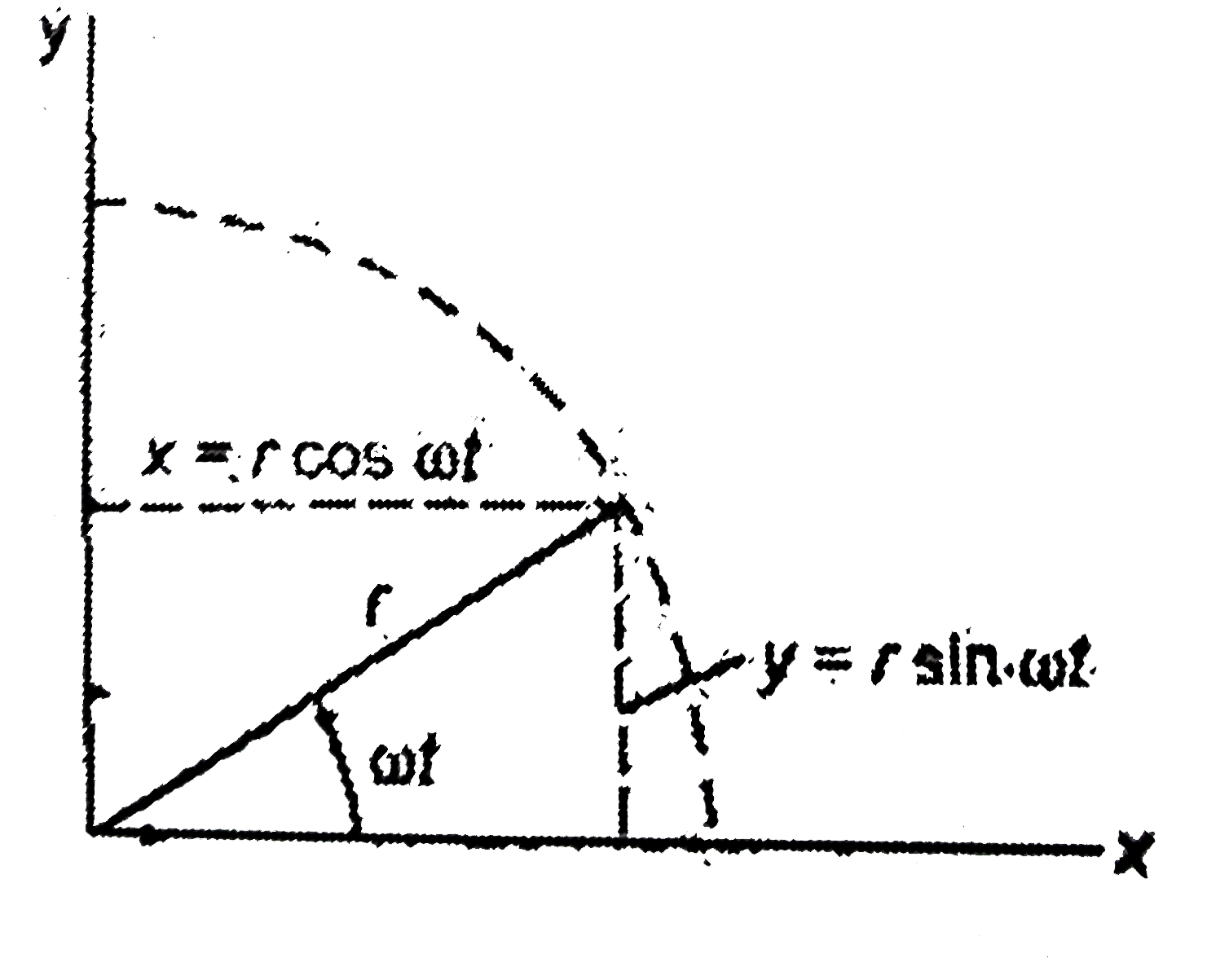y=Asinωt where A and ω are constants. Find d2ydt2.
−Aω2.cosωt
−Aω2.sinωt
−Aω3.sinωt
None of the Above
The correct Answer is:B
To solve the problem of finding the second derivative of y=Asin(ωt), we will follow these steps:
Step 1: Differentiate y with respect to t
Given:
y=Asin(ωt)
We will differentiate y with respect to t:
dydt=Addt(sin(ωt))
Using the chain rule, the derivative of sin(θ) is cos(θ), and we also need to multiply by the derivative of the inner function ωt:
dydt=Acos(ωt)⋅ddt(ωt)=Acos(ωt)⋅ω
Thus, we have:
dydt=Aωcos(ωt)
Step 2: Differentiate dydt to find d2ydt2
Now, we differentiate dydt with respect to t:
d2ydt2=ddt(Aωcos(ωt))
Again, using the chain rule, the derivative of cos(θ) is −sin(θ):
d2ydt2=Aω(−sin(ωt))⋅ddt(ωt)=Aω(−sin(ωt))⋅ω
Thus, we have:
d2ydt2=−Aω2sin(ωt)
Final Result
The second derivative of y with respect to t is:
d2ydt2=−Aω2sin(ωt)
---
Given:
y=Asin(ωt)
We will differentiate y with respect to t:
dydt=Addt(sin(ωt))
Using the chain rule, the derivative of sin(θ) is cos(θ), and we also need to multiply by the derivative of the inner function ωt:
dydt=Acos(ωt)⋅ddt(ωt)=Acos(ωt)⋅ω
Thus, we have:
dydt=Aωcos(ωt)
Now, we differentiate dydt with respect to t:
d2ydt2=ddt(Aωcos(ωt))
Again, using the chain rule, the derivative of cos(θ) is −sin(θ):
d2ydt2=Aω(−sin(ωt))⋅ddt(ωt)=Aω(−sin(ωt))⋅ω
Thus, we have:
d2ydt2=−Aω2sin(ωt)
The second derivative of y with respect to t is:
d2ydt2=−Aω2sin(ωt)
Similar Questions
Knowledge Check
STATEMENT-1 : y=ex is a particular solution of dydx=y.
STATEMENT-2 : The differential equation representing family of curve y=acosωt+bsinωt, where a and b are parameters, is d2ydt2−ω2y=0.
STATEMENT-3 : y=12x3+c1X+c2 is a general solution of d2ydx2=3x.AT F TBT T TCF F FDF F TThe position x of particle moving along x-axis varies with time t as x=Asin(ωt) where A and ω are positive constants. The acceleration a of particle varies with its position (x) as
Aa=AxBa=−ω2xCa=AωxDa=ω2xAA particle moves in xy plane according to the law x = a sin ωtand y = a(1 – cosωt) where a and ω are constants. The particle traces
Aa parabolaBa straight line equallyinclined to x and y axesCa circleDa distance proportional to time
If y=2sin(ωt+ϕ) where ω and ϕ constants then dydt will be
View SolutionIf x=2at , y=at2 , where a is a constant, then find d2ydx2 at x=12
View SolutionA particle moves in the xy-plane according to the law x=asin(ωt)andy=a(1−cosωt) where 'a' and 'omega' are constants. Then the particle. follows :
View SolutionA point moves in the plane y according to the law x=Asinωt,y=Bcosωt, whereA,B&ω are positive constant.
The equation for trajectroy for path taken by particle is
View SolutionIf y2=ax2+bx+c , where a,b,c, are constants , then
y3d2ydx2 is equal to
View Solution

